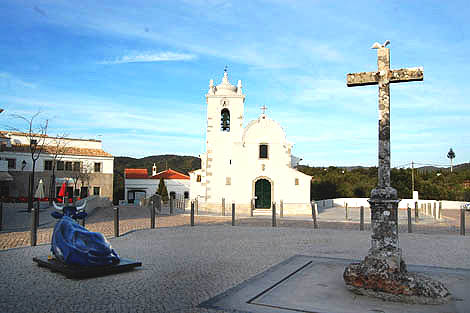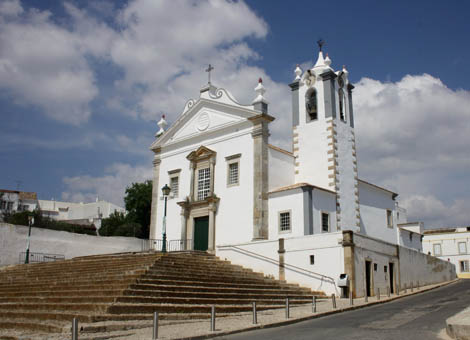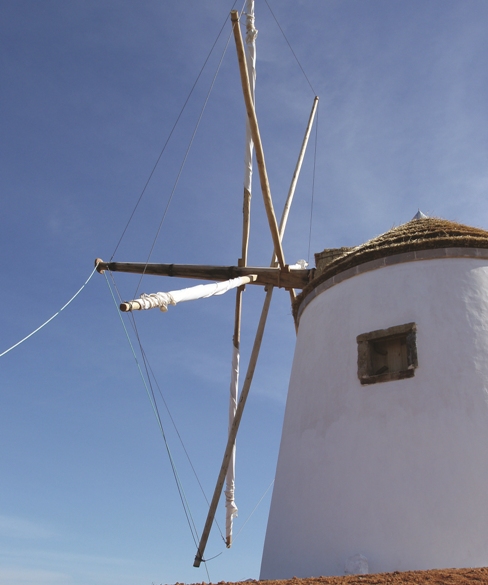 The Intermunicipal Community of the Algarve (AMAL) will request the National Association of Portuguese Municipalities (ANMP) and the Government “a new classification and inclusion of criteria that result in a new map of Low Density Municipalities, covering the Municipalities and Parishes effectively to need to be positively dynamized, as they are of low density».
The Intermunicipal Community of the Algarve (AMAL) will request the National Association of Portuguese Municipalities (ANMP) and the Government “a new classification and inclusion of criteria that result in a new map of Low Density Municipalities, covering the Municipalities and Parishes effectively to need to be positively dynamized, as they are of low density».
In a statement released this Monday, AMAL stresses that "it is with great displeasure and a feeling of discrimination" that the Algarve and AMAL became aware of the most recent classification of 164 Portuguese municipalities considered of low density for the application of positive discrimination measures, within the scope of Portugal 2020, for considering that it “discriminates and heavily penalizes the Algarve”.
In the communiqué signed by the president of AMAL, the socialist Jorge Botelho, this organization defends that the new map is “another public policy instrument of the Government, which does nothing to reduce the effect of seasonality, namely to the appearance of new complementary activities the main tourist product of the region, to attract investment to the interior, whether in tourism or in other sectors of economic activity».
Alcoutim, Aljezur, Castro Marim, Monchique and Vila do Bispo were the Algarve's municipalities considered to have low density according to a classification based on a set of six indicators: population density, demography, settlement, physical characteristics of the territory, socioeconomic characteristics and accessibility .
From outside, like the Sul Informação had already noticed, were the parishes and interior areas of municipalities such as Lagos, Portimão, Lagoa, Silves, Albufeira, Loulé, Faro, São Brás de Alportel, Olhão, Tavira and Vila Real de Santo António, including Cachopo, Querença, Ameixial, São Marcos da Serra or Estoi.
 The proposal approved on March 26 by the Interministerial Commission for Coordination of the Partnership Agreement (CIC Portugal 2020), was based on a proposal by the National Association of Portuguese Municipalities – Section of Low Density Municipalities and the Rural World, without considering regional adjustments, within the framework of the Monitoring Committees of community programs, as was also proposed by ANMP.
The proposal approved on March 26 by the Interministerial Commission for Coordination of the Partnership Agreement (CIC Portugal 2020), was based on a proposal by the National Association of Portuguese Municipalities – Section of Low Density Municipalities and the Rural World, without considering regional adjustments, within the framework of the Monitoring Committees of community programs, as was also proposed by ANMP.
Not being included in the classification approved by the Government, which "clearly harms municipalities in the interior of the Algarve, compared to other regions of the country", AMAL emphasizes that it "completely disagrees with the criteria valued by the Commission and by the ANMP itself, which result in the loss investments that could flow from the 2014-2020 Structural Funds'.
The Government should «have corrected this proposal, in the sense of not penalizing and discriminating the Algarve», but this did not happen.
“The current classification compromises the success of the strategy defined for the region, due to the non-recognition and devaluation of the importance of local-based socio-economic development, as a key instrument for the region's social and territorial cohesion”, reinforces AMAL president Jorge Botelho.
AMAL, representing the municipalities of the Algarve, therefore proposes to promote a «proposal to change this mapping», which reflects the «reality of the interior of the region, focused on the reality of the parish and not that of the municipality as a whole and submit it to CIC Portugal 2020 for approval».
“This proposal must be elaborated together with the local development agencies, in order to reach a regional consensus on this matter”, emphasizes AMAL.
 The first to criticize the new map of Low Density Municipalities was Luís Gomes, Mayor of Vila Real de Santo António and PSD/Algarve, for whom changing the classification criteria represents a «severe attack on the Algarve».
The first to criticize the new map of Low Density Municipalities was Luís Gomes, Mayor of Vila Real de Santo António and PSD/Algarve, for whom changing the classification criteria represents a «severe attack on the Algarve».
The mayor regretted that, due to the changes, "the majority of the region's councils and weaker territories will be prevented from accessing financing mechanisms in the coming years."
Last week, the PSD/Algarve also took a strong stand against the new map, as it considered, in a statement, that the Government's decision translates into “barring access to specific competitions for various organizations, bonus criteria in the assessment of applications and the increase in support fees'.
«This decision will harm the Algarve economy in municipalities, companies and IPSS in the municipalities of Lagos, Portimão, Lagoa, Silves, Albufeira, Loulé, Faro, São Brás de Alportel, Olhão, Tavira and Vila Real de Santo António, which suffer from access to community funding in relation to the vast majority of municipalities in the country», added the Algarve social democrats.
The PSD/Algarve, which blames ANMP above all for the situation, considers the new classification "is profoundly unfair to the Algarve as the reality between the coastal and inland areas of the region's municipalities is profoundly different".
"It is not possible not to consider low density areas as areas of Serra do Caldeirão or others", stress the social democrats.
Therefore, the PSD/Algarve announced that, "through its mayors, it will seek with the ANMP to reverse this situation" which is "deeply penalizing for our region".


















Comments